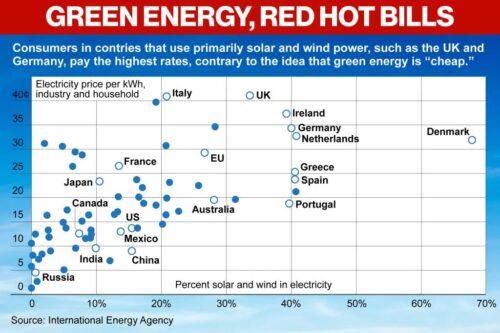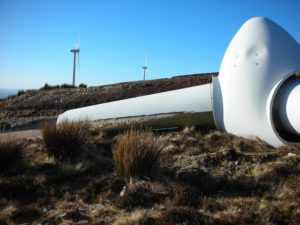by B. Lomborg, May 8, 2025 in ClimateChangeDispatch
Ask families in Germany and the UK what happens when more and more supposedly “cheap” solar and wind power is added to the national power mix, and they can tell you by looking at their utility bills: It gets far more expensive. [emphasis, links added]
The idea that power should get cheaper as we get more green energy is only true if we exclusively use electricity when the sun is shining and the wind is blowing.
But modern societies need power around the clock. When there is no sun and wind, green energy needs plenty of backup, often powered by fossil fuels. What this means is that we pay for not one but two power systems.
And as the backup fossil fuel power sources are used less, they need to earn their capital costs back in fewer hours, leading to even more expensive power.
This means the real energy costs of solar and wind are far higher.
One study looking at China showed that the real cost of solar power on average turns out to be twice as high as coal, while a peer-reviewed study of Germany and Texas shows solar and wind are many times more expensive than fossil fuels.
Germany and the UK now have so much “low-cost” solar and wind that their electricity costs have become among the world’s most expensive.
The latest data from the International Energy Agency make it clear that there is a strong and clear correlation between more solar and wind and much higher average energy prices for households and industries.
In a country with little or no solar and wind, the average electricity cost is a bit over 11¢ per kilowatt-hour.
For every 10 percentage points of solar and wind, the cost increases by more than 4¢. The results are nearly similar for 2019, before any impacts of COVID and the Ukraine war.
Look at Germany, where 34¢ per kWh is more than twice the US cost and nearly four times the Chinese price.

Germany has installed so much solar and wind that, at full capacity, it could produce two times Germany’s electricity demand.
…








